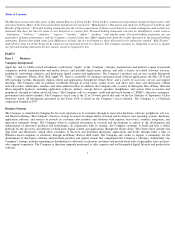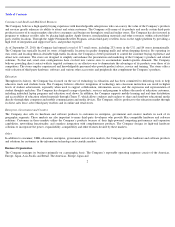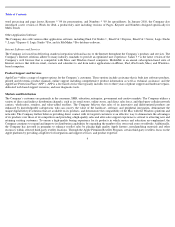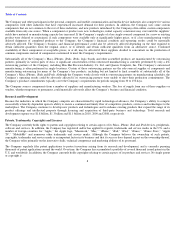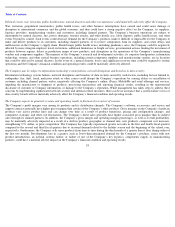Apple 2010 Annual Report Download - page 14
Download and view the complete annual report
Please find page 14 of the 2010 Apple annual report below. You can navigate through the pages in the report by either clicking on the pages listed below, or by using the keyword search tool below to find specific information within the annual report.
Table of Contents
In the event of renewed financial turmoil affecting the banking system and financial markets, additional consolidation of the financial services
industry, or significant financial service institution failures, there could be a new or incremental tightening in the credit markets, low liquidity,
and extreme volatility in fixed income, credit, currency, and equity markets. In addition, the risk remains that there could be a number of follow-
on effects from the credit crisis on the Company’
s business, including the insolvency of key outsourced manufacturing partners or suppliers or
their inability to obtain credit to finance development and/or manufacture products resulting in product delays; inability of customers, including
channel partners, to obtain credit to finance purchases of the Company’
s products and/or customer, including channel partner, insolvencies; and
failure of derivative counterparties and other financial institutions negatively impacting the Company’
s treasury operations. Other income
and expense also could vary materially from expectations depending on gains or losses realized on the sale or exchange of financial instruments;
impairment charges resulting from revaluations of debt and equity securities and other investments; interest rates; cash balances; and changes in
fair value of derivative instruments. Increased volatility in the financial markets and overall economic uncertainty would increase the risk of the
actual amounts realized in the future on the Company’
s financial instruments differing significantly from the fair values currently assigned to
them.
Uncertainty about current global economic conditions could also continue to increase the volatility of the Company’s stock price.
Global markets for the Company’
s products and services are highly competitive and subject to rapid technological change. If the Company is
unable to compete effectively in these markets, its financial condition and operating results could be materially adversely affected.
The Company competes in highly competitive global markets characterized by aggressive price cutting, with resulting downward pressure on
gross margins, frequent introduction of new products, short product life cycles, evolving industry standards, continual improvement in product
price/performance characteristics, rapid adoption of technological and product advancements by competitors, and price sensitivity on the part of
consumers.
The Company’
s ability to compete successfully depends heavily on its ability to ensure a continuing and timely introduction of innovative new
products and technologies to the marketplace. The Company believes it is unique in that it designs and develops nearly the entire solution for its
products, including the hardware, operating system, numerous software applications, and related services. As a result, the Company must make
significant investments in research and development and as such, the Company currently holds a significant number of patents and copyrights
and has registered and/or has applied to register numerous patents, trademarks and service marks. By contrast, many of the Company’
s
competitors seek to compete primarily through aggressive pricing and very low cost structures. If the Company is unable to continue to develop
and sell innovative new products with attractive margins or if other companies infringe on the Company’s intellectual property, the Company’
s
ability to maintain a competitive advantage could be negatively affected and its financial condition and operating results could be materially
adversely affected.
In the market for personal computers and peripherals, the Company faces a significant number of competitors, many of which have broader
product lines, lower priced products, and larger installed customer bases. Consolidation in this market has resulted in larger and potentially
stronger competitors. Price competition has been particularly intense as competitors selling Windows-
based personal computers have
aggressively cut prices and lowered product margins. The Company also faces increased competition in key market segments, including
consumer, SMB, education, enterprise, government and creative markets. An increasing number of Internet devices that include software
applications and are smaller and simpler than traditional personal computers compete for market share with the Company’s existing products.
The Company is currently the only authorized maker of hardware using the Mac OS. The Mac OS has a minority market share in the personal
computer market, which is dominated by computer makers using competing operating systems, most notably Windows. The Company’
s
financial condition and operating results depend substantially on the Company’
s ability to continually improve the Mac platform to maintain
functional and
11


